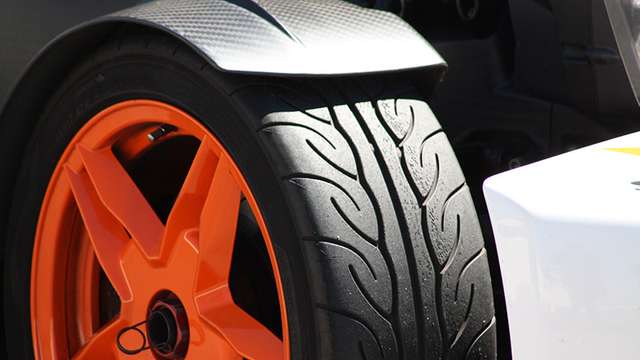- tyres
What are high-performance tyres?

Updated 10 Aug 2021
Rowan Johnstone

High-performance tyres are designed to give vehicles a grippier, more responsive connection to the road in wet or dry conditions. As opposed to other tyre categories such as all-season or winter tyres, performance tyres are constructed and designed using specific and unique compounds, materials and tread patterns, all of which are geared to delivering, you guessed it, the best performance.
Performance tyres change the characteristics of your car by improving grip on the road as well as improving responsiveness, handling, braking and steering wheel feedback. That should translate into increased driving confidence in conditions that aren’t exactly perfect.
Along with better cornering and braking performance, high-performance tyres also improve things when you just want to go fast in a straight line. If you accelerate heavily from a standing start and your tyres aren’t up to the task you’ll get wheel spin. What you really want is for your tyres to grip down and launch your car forwards with little to no wheel spin.
Once you’ve launched successfully, another benefit of high-performance tyres is realised. They usually have a high-speed rating, meaning they can handle faster speeds for a longer period of time that you typically wouldn’t reach on your standard tyres.
TYRES
They're super important, find out why
A tyre’s speed rating (marked by a letter on the sidewall) might mean that a tyre is capable of high speeds, but it’s important to remember that performance is not all about speed. Just because you’ve got an exceptional set of tyres on your car it doesn’t mean you should test its limits at every opportunity. At this point, I’m probably obliged to tell you that you should always drive within the speed limit and within your own capabilities. Performance tyres offer enhanced safety, that’s the point.
SPEAKING TYRE Do you know what all the letters and numbers on tyres mean?
And pushing a performance tyre constantly to the limit won’t do your bank account any favours anyway. The grippier, softer rubber compound and generally stiffer and shorter sidewalls on performance tyres can cause the tread of the tyre to wear more quickly, especially if you have a more aggressive driving style.
Many people like to make performance-improving modifications to their car. This might take the form of upgraded suspension, brakes, exhaust system or innumerable other components. However, tyres should be somewhere near the top of the modification list. No matter how good or expensive the rest of the modifications are, if those enhancements can’t transmit their performance improvements through the tyres, they’re pretty much useless.
Pros and cons of high-performance tyres
- Precise handling with improved grip and responsiveness in dry and wet
- Improved handling and braking distance
- Improved performance all round means safer
- Quieter and more comfortable ride
- Fuel economy may be affected
- Softer rubber compound means the tyre lifespan may be reduced
- More expensive
If you’re looking for a tyre with an extended tread life, yet still something that can handle a bit of spirited driving from time to time, an AutoGuru tyre specialist can advise you on the best tyre for your driving requirements.
Easily get a free quote for your next tyre replacement by clicking here.

Written By
Rowan Johnstone
On weekends you’ll probably find Rowan in the garage with his Dad restoring a 1958 Ford Star Model Customline or enjoying a cruise through the Gold Coast hinterland on his Suzuki GSX-R600.
Despite his passion for being behind the wheel (or handlebars), he looks forward to the day when he can commute to work in his own driverless car.